As a parent, you have to weigh out baby food pouches vs. jars when it’s time to feed your baby or toddler, but there’s some pros and cons to both that you’ve got to be aware of first!
Her text read: Is it okay for Marin to eat baby food pouches? She eats them a lot!
My dear friend was asking about her 8 month old, first-born daughter. I smiled to myself as I typed in my answer, because there was a lot I had to say as a feeding therapist about the popular and uber convenient baby food pouches that are now a way of life for most parents of young kiddos.
But, the answer to my friend’s question wasn’t a quick reply, in fact, I told her we’d talk about it in a few days when I saw her, because there’s some dangerous pitfalls to using baby food pouches all the time.
And yet, they have some benefits over jarred baby food, besides the obvious less-mess factor, which I don’t count (more on that in a minute).
So, let me give you my list of pros and cons of baby food pouches, and at the end, I’ll reveal the baby food vehicle that’s the ultimate winner in this show down of pouches vs. jarred food!
Affiliate links used below. See our full disclosure.
Are We on the Same Page About Baby Food Pouches?
Just to be 100% clear, a baby food pouch is a bag, instead of a jar, that has a straw like spout on the top. They were first introduced in 2008 by Plum Organics, and were a massive success because they were portable and easy to dispense baby food out of. I’m not sure if the company intended babies to suck straight out of the pouches or not, but that is how many babies and toddlers eat them.
This is an example of one, and you can find them everywhere from Amazon to gas stations.
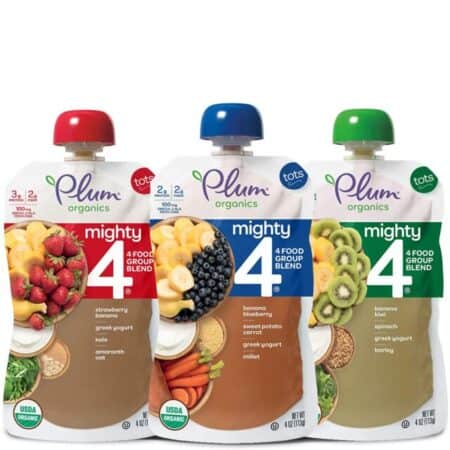
These pouches are also popular in the picky eater crowd! It’s common for toddlers to get stuck on these foods and not give them up. Parents continue to give the pouches even at older ages because it may be the only type of food their child eats, or the only fruits and vegetables in their diet.
Of course, it didn’t take long for every other baby food company to also begin selling baby food pouches. Today, you can even buy your own reusable pouch, like this one, which is perfect for parents that want to make homemade baby food and kids that are hooked on pouches.
The Pros of Baby Food Pouches vs. Jars
The baby food pouch offers several winning factors over traditional jarred baby food.
# 1: Sucking thick baby food through a little straw develops stronger muscles in and around the mouth that are needed for eating! Most of us take for granted the complicated coordination and strength that eating requires. But eating is a skill too, and sucking from a straw, which doctors don’t expect babies to do until at least 9 months old, is something that can improve how a child eats.
These skills are also known as oral motor skills.
# 2: They encourage independence, another skill that occupational therapists like myself, focus on. With a pouch, a baby can feed themself at a very early age, sometimes as early as 6 months. That sense of independence may help them make other independent decisions with food in the coming months.
It’s highly unlikely that a baby will be able to spoon feed themselves much before their first birthday, and it could take them until 18-24 months before they’re doing it well.
# 3: Baby food pouches are fun for kids, and combined with the fact that they can feed themselves, I suspect it’s why we see some kids not wanting to give them up. Recently, my 8 year old couldn’t wait to get his hands on an applesauce pouch from a friend. He sucked it down in a second and was looking for more, even though he eats applesauce just fine from a bowl.
Having a cute little pouch to slurp down quickly is way more fun.
# 4: There is no denying that baby food pouches are incredibly convenient. They slide right into a purse or a diaper bag, and whether you squeeze some out onto a spoon first or just hand the whole thing to your child, the mess is much less. That can be super helpful while you’re at your 5 years old soccer game and need to squeeze a meal in for your toddler that won’t sit still!
Cons of Baby Food Pouches
There are a couple of big cons of using baby food pouches on a regular basis that I’ve seen have a negative impact on a child’s future eating. Basically, I’ve seen baby food pouches play a major role in a child developing into an extreme picky eater, or making it worse.
# 1: Baby food pouches don’t allow any mess. I know that seems great on the surface. But, babies and toddlers getting messy eating is what was meant to happen. As they touch, explore, and play in different textures of food, their brain is learning how to interpret and accept those textures. For some babies and toddlers that never touch their food or get messy, they can become extremely sensitive to new textures and that means they’ll only eat a few things.
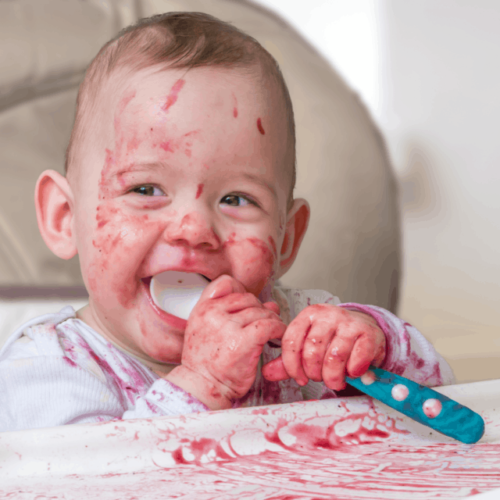
Think about the picky eater that only eats crunchy foods, that’s just one example.
But, many times, babies and toddlers are drawn to the pouch because they already have a sensory sensitivity, that is part of their genetic makeup. And, it’s quite common as far as feeding challenges go.
Don’t make the mistake of thinking there’s nothing that can be done about such a sensitivity though. The more a child touches any type of texture, the better their brain will adapt. When a child is only given the pouch, their brain may not have a chance to grow in that way.
# 2: Children that use baby food pouches for most or all meals may develop an aversion to a spoon coming towards their face. For some, the feeling of the metal is overwhelming and they’ll shudder and turn away. For other kids, they haven’t learned how to receive a spoon. They literally don’t know what to do. And, they could begin to resist and become fearful of the spoon.
Obviously, this makes it difficult to teach them to eat new and different foods.
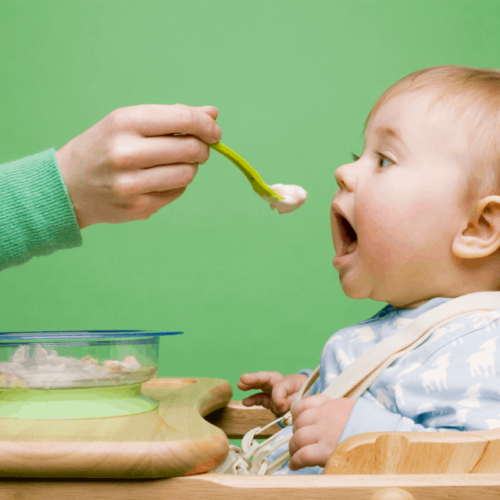
# 3: It’s easy to fall into relying on the pouches and skip offering them table foods. Some kids might not seem interested, but the pouch or even jarred baby food can give a sense of security because they’re still eating.
But, there’s a critical window of time when babies learn to chew instinctively between 8 and 11 months old. It can be taught after 11 months, but it does require some specific strategies and help to get them there. You can learn more about what to avoid when teaching your child to eat table foods in this free workshop.
# 4: Baby food pouches can get punctured inside of a bag, which can make quite a mess. Or, if a pouch does get a small hole and you don’t notice, mold could develop inside. Make sure you always do a quick inspection of the bag before feeding it to your child!
The Winner of the Baby Food Pouch vs. Jar Show Down?
Drum roll please….
The winner is…
Both! I believe the best way to support your child’s feeding development, and hopefully avoid extreme picky eating, is to use a combination of both pouches and jarred or homemade baby food they’re fed from a jar.
Actually, you can use just pouches, but for at least 50% of the meals, squeeze all the food from the pouches into a bowl so your child can be fed from a spoon. Even better is using some homemade baby food, make sure it’s totally smooth without any chunks in it.
Even better still is to give your child a little bit of the baby food in their own bowl, with their own spoon (these are my favorite for babies/toddlers/preschoolers)
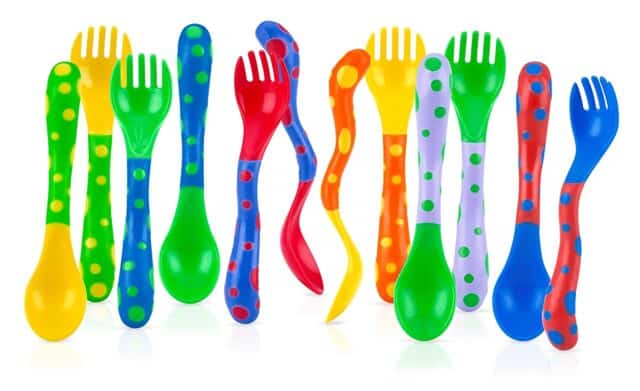
That way, if they dump or throw it, not a lot is wasted. With this set up, they can practice feeding themselves and are sure to get messy! If you need more convincing on embracing the mess, head to Why Babies Need to Get Messy.
What do you think? Are you going to use pouches, jars, or both? Tell me in the comments below or pass this onto a friend that may need some guidance. It’s such a common question!
Free Printable Toddler Food Printable
Is your child getting ready for table foods? Or, maybe you’ve already started? Then click below to get my free toddler food printable list. It’s pages full of meal ideas and foods that are perfect for toddlers and older babies!
Click here for the Toddler Food Printable
More on Babies and Toddlers Eating
What to Do When Baby Won’t Eat Solids: 7 Simple Steps
Mega List of First Finger Foods
How Much Milk Should a Toddler Drink
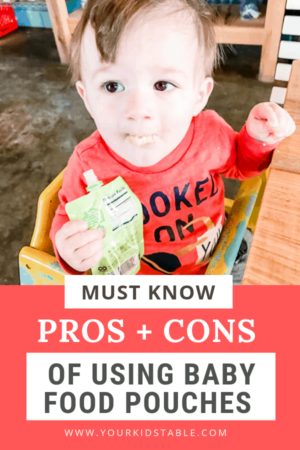
Alisha Grogan is a licensed occupational therapist and founder of Your Kid’s Table. She has over 14 years experience with expertise in sensory processing and feeding development in babies, toddlers, and children. Alisha also has 3 boys of her own at home. Learn more about her here.
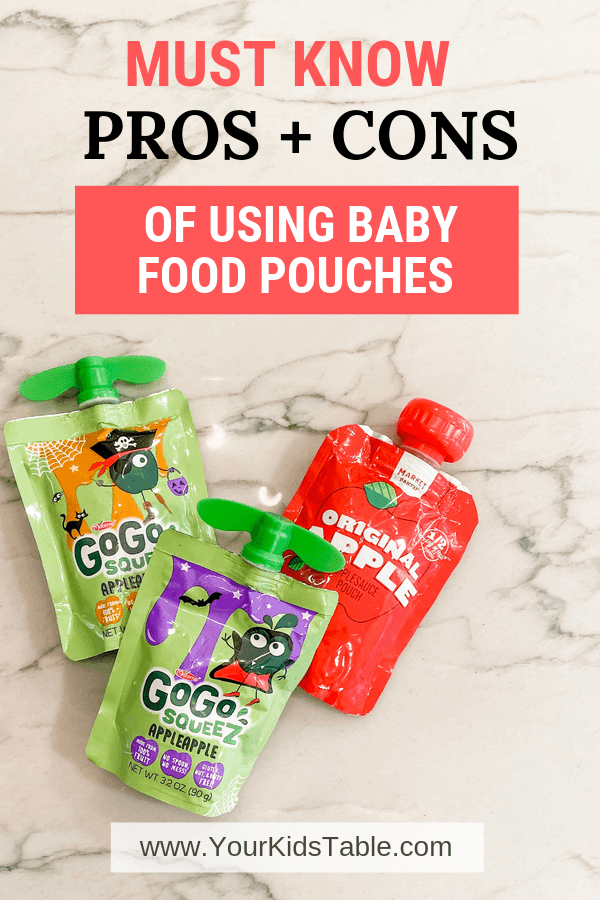
My 10 month old started eating finger foods late at the end of 9 months. He started to refuse being spoon feed baby food and just this week refuses to eat anything from a spoon. I feed him three finger food meals a day and usually spoon feed him baby food; he gets a formula bottle before and after his two naps. He snacks on puffs, yogurt melts, and rice crackers in between meals. He is still getting used to finger food and leaves about a 1/4 of it, I am worried that the finger food and bottles are not enough food. Should I be concerned?
Hey Natalie,
We understand the worries. At 10 months they are still replying on the nutrition of their formula/milk for nutrition. I would focus on getting him used to different textures and work towards introducing the next level of foods as you feel he is ready. If you are having a hard time with which foods come next you can check out our free workshop for ideas. Save your seat here
Best,
Desiree
My 14mo has not figured out how to eat out of a pouch, and he doesn’t like to touch/eat messy foods. After reading this I no longer feel “bad” that I haven’t worked to get him to eat out of a pouch, like so many of our babie/toddler friends. Yesterday for the first time he played with a mushy banana at lunch, and didn’t scream when he put his fingers in the ricotta cheese at dinner! Progress!
YES Brenna, that is progress!! I’d definitely work more on that messy play to get him used to touching different textures 🙂
Best,
Desiree
As a pediatric COTA, I’ve been treating a 2-year-old little guy who has had lots of trouble transitioning to any table food other than pouches, due to an overuse of them. As a result of being accustomed to sucking his food from pouches, he’s had a really hard time learning to chew his food thoroughly. I love that you talked about this window of opportunity for learning this crucial skill of chewing!
Hey Lisa,
So glad that you enjoyed this article! And you are seeing and understanding the outcome of utilizing pouches this way! I’m sure you can work with him and get this turned around for him 🙂
Best,
Desiree
I always squeezed the pouch out and mixed it with other things, like yogurt. We still use the pouches to add flavour to smoothies. My toddler daughter whines for apple sauce when she sees a friend of ours who usually has the pouched apple sauce for her own kids. But she knows it’s a special treat and one that she won’t get if she’s whining or it’s not meal time. I can count on one hand the number of times she’s eaten directly from the pouch, because I’ve always opened them up and dumped them out so I can see what’s inside.
That is an awesome way to use them! Thanks for sharing!
Best,
Desiree
The first thing I think when I see the majority of baby food pouches is “I LITERALLY CAN’T SEE WHAT’S IN THERE!” …I think the same for pouches for adults too though.
I thought that would be your first glaring con.
Hey Theola,
Yes, we understand that point, but from a developmental sensory experience we want all kids to have that opportunity to get messy and experience the food all over as this helps with feeding.
Best,
Desiree